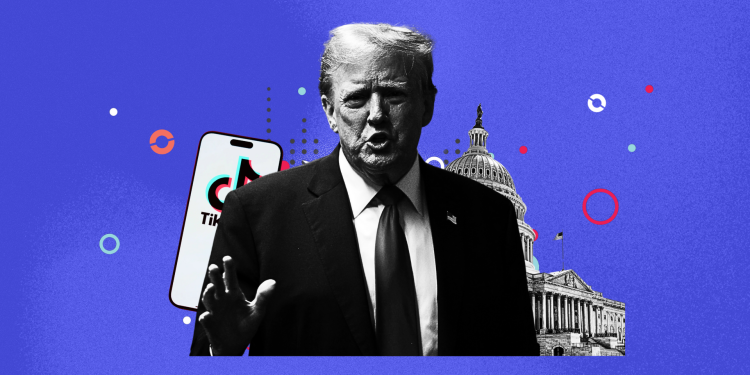For 170 million American TikTok users, a digital silence fell on January 19, 2025. The app that had become a daily habit—fueling trends, launching careers, and driving billions in business—suddenly stopped working. A simple message greeted users: “A law banning TikTok has been enacted in the US.” Just like that, the country’s most influential social platform vanished.
The ban had been looming for months, but the reality hit hard. Small business owners lost their primary marketing channel, content creators scrambled for new platforms, and a generation raised on TikTok questioned the future of their online expression. Then, in a dramatic twist, newly re-elected President Donald Trump announced an executive order delaying the ban, offering TikTok a lifeline—but with strings attached. So, is the ban truly over? And what happens next?
Why did the US ban TikTok?
At the heart of the TikTok ban lies a tangled web of national security concerns, political maneuvering, and economic interests. The U.S. government has long argued that TikTok, owned by Chinese company ByteDance, poses a threat due to potential data access by the Chinese government. Lawmakers fear that personal information from American users could be exploited or that TikTok’s algorithm could be manipulated for influence operations.
The ban gained momentum in 2024, with bipartisan support in Congress pushing for ByteDance to sell TikTok to a U.S. entity or face removal. The legislation passed, giving the company a deadline: sell TikTok or shut it down. ByteDance refused, leading to the app’s shutdown—at least temporarily. While security concerns were the official justification, many critics argue the ban was also driven by geopolitical tensions between the U.S. and China, as well as competition from American tech giants eager to reclaim market dominance.
Read more about the ban’s origins on The Guardian
What does this mean for creators and businesses?
The TikTok ban isn’t just a political issue—it’s an economic earthquake. The platform drives an estimated $24.2 billion in economic activity in the U.S., supporting millions of small businesses, content creators, and digital marketers. With 50% of users making purchases after watching TikTok content, losing the app would mean a massive shift in how businesses reach consumers.
Many brands and creators are now re-evaluating their strategies, looking toward Instagram Reels, YouTube Shorts, and Snapchat as alternative platforms. However, TikTok’s unique algorithm—favoring viral discovery over follower count—has proven difficult to replicate elsewhere.
The future of TikTok
The fate of TikTok in the U.S. remains uncertain, with experts pointing to three possible outcomes:
🔹 A U.S. buyer steps in – If an American company acquires TikTok, the platform could continue operations under new ownership. Tech giants like Microsoft and Oracle have expressed interest in past deals, and recent reports suggest that Elon Musk may also be a potential buyer. However, securing a deal of this scale—while navigating political and regulatory challenges—remains a complex task.
🔹 ByteDance fights back – Legal experts believe ByteDance could challenge the ban in U.S. courts, citing First Amendment protections. TikTok has successfully overturned state-level bans before, and a prolonged legal battle could delay enforcement for years. “If ByteDance can prove that the ban unfairly targets a single company while allowing other foreign-owned platforms to operate freely, it could have a strong case,” says Jodie Cook, AI and business strategist at Forbes.
🔹 The ban is reinstated – Despite Trump’s temporary extension, lawmakers remain divided. Some members of Congress argue that the executive order lacks legal standing and could be overturned in court. If ByteDance fails to secure a sale, the original legislation mandating divestiture could take full effect, leading to a permanent ban.
For now, TikTok’s future hangs in the balance, with business leaders, legal analysts, and politicians closely watching the next steps. Whether the platform survives or not, its impact on digital culture, commerce, and social media will be felt for years to come.
















